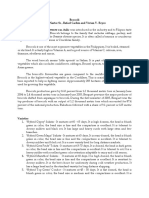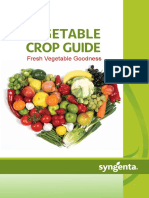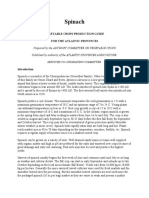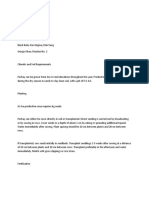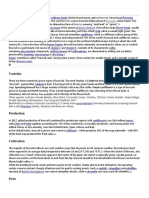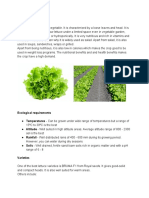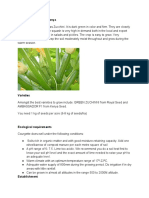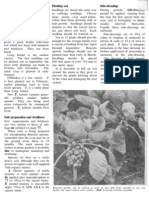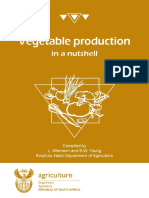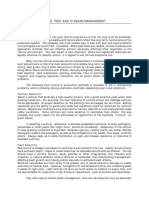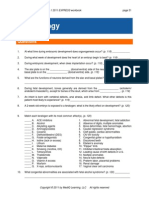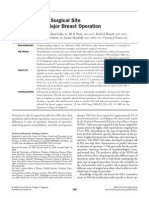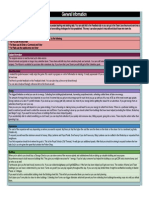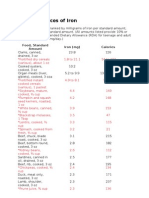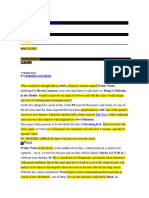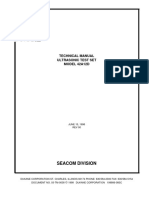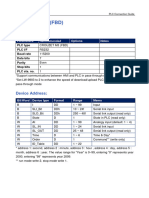Educational programs of the Kentucky Cooperative Extension Service serve all people regardless of race, color, age, sex,
, religion, disability, or national origin.
Broccoli
Broccoli (Brassica oleracea) is a cool-season
crop that performs poorly in hot weather. As a
member of the crucifer family, broccoli is closely
related to other cole crops, such as cabbage,
caulifower, and Brussels sprouts.
Marketing
Fresh market wholesale options for Kentucky
broccoli producers include produce auctions,
local restaurants, groceries, and wholesalers.
Retail markets include farmers markets, roadside
stands, and community supported agriculture
(CSA) shares. Kentuckys location and climate
also present opportunities for wholesale organic
broccoli production.
Market Outlook
U.S. per capita consumption of broccoli increased
nearly 50% during the 1990s. Processing use
(freezing) of broccoli remained fat during this
same time period. Fresh use, however, soared
to a record high of 6.2 pounds per capita in 1999
before leveling off in 2001. Fresh broccoli use
was about 5.5 pounds per capita during the mid-
2000s and increased back toward the 6.0 pound
per capita level in 2010. Freezing broccoli
volume increased in the late 2000s to about 2.5
pounds per capita.
Higher fuel/transportation costs, especially for
bulky crops like broccoli and
potatoes, impacted most large
western produce growers in
the mid-2000s. Production
alliances with northern,
southern and western growers have been explored
by Kentucky producers with some focus on
fall broccoli production. Producers interested
in growing broccoli on a larger scale should
carefully weigh marketing and production costs.
Production Considerations
Cultivar selection
Growers should consider head size, shape, and
color, as well as yield, earliness, and disease
resistance when selecting broccoli cultivars.
Resistance is available for downy mildew, black
rot, Pseudomonas bacterial head rot, club root,
Fusarium yellows, and yellowing in storage.
Some varieties are better suited for fall production
than spring production. In many cases these
fall varieties will have some level of resistance
or tolerance to downy mildew and grow well
as seedlings in the heat of the summer. Many
seed catalogs will denote the cultivars suitability
for spring or fall production.
Growers should only select
adapted varieties that have the
qualities in demand for the
intended market.
Agriculture & Natural Resources Family & Consumer Sciences 4-H/Youth Development Community & Economic Development
University of Kentucky CDBREC Home CDBREC Crop Profles College of Agriculture
Site selection and planting
Select a site that is well-drained; poorly drained
soils should be avoided. Slightly rolling land is
suitable. This crop will do well on ground that
has been in tobacco. Fescue sod ground also
works well if the sod is plowed under early in the
fall and allowed to decompose.
The ground for spring broccoli should be plowed
in the fall in order to have a crop ready for early
sales. Avoid planting spring broccoli too late as
it can bolt (fower prematurely) before forming a
complete head. Broccoli can be directed-seeded;
however, use transplants for an early market. A
minimum of 11,000 plants will be needed for each
acre. Set transplants in the feld by the middle of
April for a spring crop. Broccoli also does well
as a fall crop and should be transplanted by mid-
August.
Tobacco setters can be used for transplanting.
Care should be taken to choose the appropriate
spacing for broccoli production. Extra wide plant
spacing can lead to much larger heads, while
tighter spacing of plants will lead to smaller
heads. Typically, wholesale markets will require
a smaller head than direct retail sales. Be sure to
determine what size head your market requires to
help determine plant density.
Broccoli responds well to plastic mulch and
drip irrigation. If using plastic mulch for a fall
crop, growers may want to choose a white plastic
instead of black. This can result in less transplant
shock; black plastic can generate excessive heat
during late summer. Irrigation is critical for
establishing the fall crop.
Pest management
Insect pests can be a major problem in broccoli
production, especially in summer plantings for
fall harvest. Damage to transplants and older
plants can result from cutworms, imported
cabbage worm, cabbage looper, diamondback
moth larvae, and cross-striped cabbage worm.
Marketability is reduced when insects feed on
heads or wrapper leaves. Early detection is
critical for controlling these pests. Scouting to
monitor populations can help growers determine
when and how often pesticides should be applied.
Bt is a microbial insecticide that can be used
effectively against most types of broccoli pests.
A number of Bt products can be used in organic
production.
Several plant diseases (black rot, blackleg, and
downy mildew) can also result in yield losses. A
good crop rotation program and the use of certifed
disease-free resistant varieties will help in the
prevention of many of these diseases. Fungicide/
bactericide sprays may also be necessary.
Harvest and storage
Central heads and later-maturing lateral heads
are cut by hand before the yellow petals appear.
Cut the heads with 6 to 8 inches of stem attached.
Heads need to be cooled immediately after
harvest. Broccoli is sold to the wholesale fresh
market in waxed cartons holding 14 bunches with
two to three heads to the bunch. Top ice may also
be required for wholesale markets.
Labor requirements
Labor needs are approximately 14 hours per acre
for production, 90 hours per acre for harvest, and
45 hours per acre for packing. Plasticulture will
add 8 to 10 hours more per acre, mostly for the
removal of the plastic.
Economic Considerations
Initial investments include land preparation and
the purchase of seed or production of transplants.
An additional start-up cost can include the
installation of an irrigation system and plastic
mulch.
Production costs are estimated at $1,385 per
acre, with harvest and marketing costs at $1,383
per acre. Since returns vary depending on actual
yields and market prices, the following per acre
returns to land and management are based on
three different economic scenarios. Conservative
October 2010 Photo by M.E. Bartolo, Bugwood.org
For additional information, contact your local County Extension agent
estimates represent the University of Kentuckys
average statewide cost and return estimates for
2010. Figures are for trickle irrigated broccoli.
PESSIMISTIC CONSERVATIVE OPTIMISTIC
$(235)* $275 $865
*Parentheses indicate a negative number, i.e. a net loss
Selected Resources
Bt Basics for Vegetable Integrated Pest
Management, ID-156 (University of Kentucky,
2005)
http://www.ca.uky.edu/agc/pubs/id/id156/id156.
pdf
Growers Guide to Bt, ID-156A (University
of Kentucky, 2005)
http://www.ca.uky.edu/agc/pubs/id/id156a/
id156a.pdf
Vegetable and Melon Budgets (University of
Kentucky, 2008)
http://www.uky.edu/Ag/cdbrec/vegbudgets08.
html
Vegetable Production Guide for Commercial
Growers, ID-36 (University of Kentucky)
http://www.ca.uky.edu/agc/pubs/id/id36/id36.htm
Broccoli: Commercial Vegetable Production,
Circular 764 (University of Georgia, 2010)
http://www.caes.uga.edu/Publications/
displayHTML.cfm?pk_id=6370
Cole Crops and Other Brassicas: Organic
Production (ATTRA, 2006)
https://attra.ncat.org/attra-pub/summaries/
summary.php?pub=27
Reviewed by Brent Rowell, Extension Specialist (Issued 2002, Revised 2006)
Reviewed by Tim Coolong, Extension Specialist (Revised 2010)




